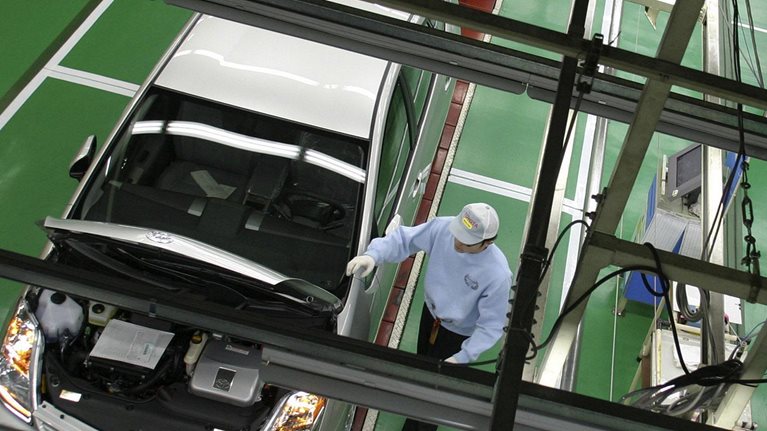Leaders across Japan’s private and public sectors are trying to reignite growth and achieve levels of performance and productivity on par with global standards. From “Abenomics” to the 2020 Olympics, the case for change in Japan is firm and visible. Ever-increasing competition and a shift of innovation away from sectors where Japan was traditionally strong (from hardware manufacturing to services and software, for example) are pushing Japanese champions to globalize their practices. Slow domestic growth and sluggish modernization of the operating model mean that multinational companies must struggle to deliver the profits they once did in Japan. Many services that have been streamlined and digitized in the West, for instance, are still human powered, at a high level of customization.
Stay current on your favorite topics
But global companies trying to take a page from the usual change-management playbook may struggle in Japan. Domestic experience is limited, and a more effective approach has yet to emerge. Change management is a complex endeavor inspiring multiple perspectives. Research suggests that only a third of change-management programs globally achieve their original objectives. Employee resistance is a factor in a significant proportion of programs that fail.
A few core elements of change management are universally recognized: inspirational and effective change leaders to act as role models; a change story, with real meaning, to persuade leaders and employees; new mind-sets and behavior among employees; and the orchestration of change in an expanding, self-sustaining wave throughout the organization. But our experience supporting change efforts in leading Japanese organizations (and in multinational organizations in Japan) suggests that this approach must be adapted to the country’s specific conditions.
A change-management approach focused on “the last man standing”—in addition to the “change leader or agent” model at the core of most Western approaches—may be the one most suitable for consensus-driven organizations in Japan and other cultures. Leaders in Japan understand that change programs fail at the middle-management level, where just a few people (or even one) can impede the consensus-building process. We believe that change-management programs can increase their chances of success not by fighting a consensus-oriented culture (or by strengthening the top-down communication cascade) but by focusing greater effort on the potential blockers. A set of simple practices can increase the chances of success in major transformations.
Here we share our observations and lessons on how to drive change in Japan. The objective is not to treat the subject exhaustively but rather to provide empirical observations from our experience.
Five tenets of change management and why they fail in Japanese organizations
Certain tenets of change management are well accepted in global businesses but don’t work well in Japanese organizations (exhibit).

The role of the change leader (or ‘first mover’) is significantly diminished in ‘middle-up’ Japanese organizations
Change leaders have a pivotal role in driving change. They take the first step in a new direction, they show others a new way, they take risks, and they trigger a cascade of change throughout their organizations. First-mover leaders in the West have a strong sense of mission, a passion for innovation, financial incentives, pressures (for instance, from shareholders)—or a mix of all these. CEOs are usually groomed and chosen to drive change at various levels of the organization because of their record in driving performance. Most important, global CEOs are appointed with a mission and chosen for their ability to deliver on goals. Shareholders believe that these leaders are up to the next challenge and the next opportunity.
But Japanese companies are “middle-up” rather than top-down. Many (though not all) senior leaders of traditional Japanese corporations hold their positions in recognition of their past contributions and their ability to navigate disparate divisions of the organization through long rotation programs. Pressure from shareholders is lower; many companies still do not have independent boards that represent them. Finances are managed on longer cycles—midterm plans cover three to five years, with only a negligible emphasis on quarterly performance. A culture of harmony values coordination and smooth collaboration rather than standing out or pushing unilateral initiatives. This culture makes it less likely that change leaders will emerge and assert themselves by taking risks and role-modeling new ways of working. The conditions in which that might happen simply do not exist.
Would you like to learn more about our Organization Practice?
Although this mind-set survives crisis situations, a crisis does help to identify leaders of change. Those in Japanese companies tend to fall into either of two categories. The first consists of outsiders: company executives initially rotated outside of headquarters and brought back to take on a risky challenge. Middle managers, the second category, take responsibility for driving change because they are committed to the future of the organization or to a vision of how the company could change.
Immediate followers are amplifiers in global organizations, but they are often the ‘black hole’ of change in Japan
Immediate followers play a key role in the transformation of global organizations. By adopting and mirroring the change leader’s behavior, these executives bring it into the mainstream, amplify it, make it acceptable to the rest of the organization, and redefine the norms of the broader group. A first-mover change leader who doesn’t rapidly build a critical mass of managers is just a visionary without impact.
In traditional Japanese organizations, the followers’ role is equally important, but reversed. Top leaders are appointed to recognize their past contributions, but people on this second level are under pressure to prove their capabilities and improve the company’s performance. This creates a risk-averse environment where mistakes are costly. In the absence of meaningful role-modeling from the top, decisions about change are made without any sense of what the leader will accept. What’s more, a consensus-oriented culture discourages behavior that could be perceived as negatively affecting someone else. At the beginning, any change does trigger negative consequences for others, since it requires related changes to accommodate an overall new way of working.
In summary, the conditions in which immediate followers could follow do not exist in Japan. Creating them would not be a simple change-management process—it often involves achieving the change itself. Second-level management often becomes an obstacle to any change and stifles the drive for innovation and improvement in the corporate operating model and culture.
A change story that inspires and motivates employees fails without a detailed description of the new model in Japanese organizations
A well-crafted change story describes why change must happen, provides a case for it, connects intimately with employees, and is relevant for all of them. Far from acting in isolation, the change story should be accompanied by programs to build new processes and capabilities. The first step is getting people to buy into change, with details to follow.
Many Japanese companies still rely on practices and processes learned through apprenticeship, over years of collaborative work, rather than through structured corporate capability-building programs. Role descriptions are often vague, and responsibilities are shared among many employees; as a result, accountability is diluted. Changing this unwritten way of working, established at companies where many employees have spent years working together, is harder than changing a well-articulated, periodically refreshed business process. To drive change, leaders need to be more specific about what is expected from whom.
Successful change programs trigger self-propelling cascades in global organizations; in Japanese organizations, change must immediately involve the periphery
The hierarchical nature of traditional Japanese organizations is mistakenly interpreted as top-down: leaders set the pace, and the rest of the organization executes. This is true only in mature execution settings. In turbulent times, hierarchical organizations look upward to gauge and interpret what the leadership wants and find little direction, since leaders and followers alike resist acting. Wary of making the first step, they also look around for guidance to their peers. This keeps change from spreading and sustaining itself.

The five trademarks of agile organizations
A “cell-to-cell” approach involves the early and detailed engagement of the front line in defining the new model, coupled with extensive peer-to-peer endorsement and advocacy. The level of detail and specifics would be considered premature or too detailed in Anglo-Saxon organizations, but in our experience, this approach works best at lending credibility to change programs in Japan.
Traditional programs place too much attention on change agents, but in Japanese organizations blockers must also be considered
In a consensus-oriented organization, a single individual can derail change—even in late stages and even in lower levels of the organization. Management practices devote too little attention to identifying this so-called last man standing, who is unusually averse to change, in traditional Japanese organizations. Any leader in Japan is familiar with the extensive time invested in cultivating support, even at low levels and in peripheral parts of the organization. While it can be tempting to dismiss this approach as inefficient, we suggest devising more efficient ways to turn it into an instrument of change.
Practical suggestions to drive change in consensus-oriented Japanese organizations
What is the way forward for Japanese organizations? Several suggestions can be useful:
Define the end state in detail and provide a road map quite early. In our experience, the vision of change leaders has little practical effect if it isn’t accompanied by a detailed description of the new model early in the process. Consensus-driven organizations need a detailed description of the end state to engage with it and establish a new consensus. Western companies launch a transformation based on a vision and engage the organization to define the new model. But in Japanese companies, this step must occur earlier, before a broader group is engaged. “Building a plane as we fly” is never easy, but in these Japanese organizations it is a nonstarter.
Engage the front line very early and create opportunities to endorse change. Spend time in the field (for example, on the factory floor or with the sales force) to define the details of the new model, anticipate issues, and allow people to participate emotionally in the process of change by sharing their frustrations and aspirations. Instead of relying on the immediate followers in the organization’s second level, companies should identify, groom, and deploy champions of change on the front line.
Map the organizational network and tackle the last man standing. Mapping organizational networks can identify and empower change agents. Identifying potential blockers isn’t difficult, and that is even more important for successful change. Action can be taken to convert or neutralize change blockers early in the process.
Expose top management extensively, broadly, and directly. The typical change cascade propagated through change agents often struggles in traditional Japanese organizations for the reasons described above. Town-hall meetings, Q&A sessions, and other venues where top management is directly exposed to a large audience are much more effective. While this approach sacrifices intimacy, it does break through the organization’s vertical walls, overrides internal factions, and conveys a call to action that engages each member of the organization directly.
Create a team to tackle the last man standing. To mitigate the risks emanating from the last man standing, organizations need a “last team standing.” That team should not only include diverse skill sets and cover complementary areas but also embrace a common determination to drive change and endure the short-term difficulties that come with it. Investing up front in such a purposeful team goes a long way in sustaining change and embedding the new model’s procedural and cultural elements.
In this context, the “third generation” of leaders, roughly in the age bracket of 35 to 45 years old, is becoming an important source of energy for change. We have briefly touched upon the attitudes and roles of top management and its immediate followers above. People in the third group, emerging from years of economic stagnation, never experienced the golden times of productivity growth and innovation in Japan. Increasingly, they realize that they have a future to build, not a legacy to protect. Their decreased sense of security makes them more open to risk than previous generations and willing to undergo change if they are well supported within the organization.
Japan’s aging and shrinking population and slow economy make the need for change loom larger than ever in Japanese companies. The lack of generally accepted approaches for managing change is one of the key obstacles to the modernization of the public and private sectors. In this paper, we have shared lessons from successful change programs based on culturally attuned principles.


